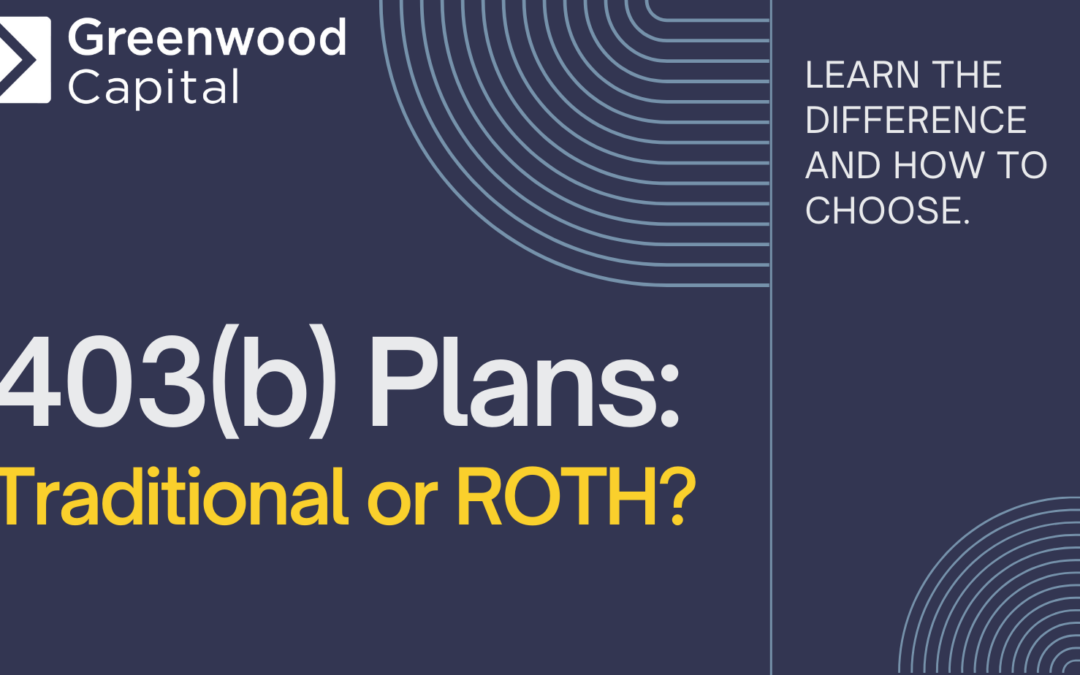Amidst volatile markets and dire headlines, it can be stressful to try and plan for retirement. There are so many factors you cannot influence, however, there are five things you can control:
How Long Will I Work?
How Much Can I Save?
How Much Will I Spend in Retirement?
How Much Risk Will I Take On?
What Will I Leave Behind?
We call these the Five Levers. Plan your retirement by answering these questions and adjusting these levers to account for your priorities and goals.
Let’s take an in-depth look at the second lever: How Much Can I Save?
When we’re talking about your personal savings, we’re talking about funds that you have in tax-advantaged accounts like IRAs, 401(k) plans, 457(b) plans, and 403(b) plans, as well as any investments you hold outside of tax-advantaged accounts. A retirement income plan involves converting these personal savings into a source of retirement income that fits your needs.
There are three steps you can take to get started on investing.
- Implement Strategy
- Determine Allocation
- Plan for Withdrawals
These steps are also actions you can take on a regular basis to be sure your financial plan is still going to provide you with the retirement you envision. In this three-part series, we will walk through these steps and the various techniques you can utilize as you plan.
Implement Strategy
The first step is to implement an investment strategy that provides, with reasonable certainty, the annual income you will need, while balancing other considerations, such as liquidity, your risk tolerance, and anticipated rates of return. This includes understanding what type of account you should be utilizing and how much you should be saving.
Types of Accounts
Pension plans are at their simplest, a pool of money in which an employer funds employee retirement by making contributions. There are two main types. A defined benefit plan will target either a set monthly payment for eligible employees for life or a lump sum at retirement. A defined contribution plan grows throughout the employee’s career, and the balance is available upon retirement.
If you have access to a pension plan through your employer, be sure you understand how the plan is set up and what qualifications will need to be met for you to receive the funds.
The most common employer-sponsored retirement plans are either a 401(k), a 457(b), or a 403(b). These plans are very similar and are primarily differentiated by what organizations are able to provide them. 401(k) can be offered by most for-profit companies or businesses. 403(b) plans are exclusive to public schools and certain 501(c)(3) charities. 457(b) are similarly only available to specific state and local governments and some non-governmental entities.
These plans are all tax-deferred. Contributions to a plan as elective salary deferrals are tax-exempt (up to specific limits). In retirement, distributions from the account (including any earnings) are taxed as income. These plans are operated by the employer and employers can contribute to employee accounts, typically on a matching basis to employee contributions.
IRAs (Individual Retirement Accounts) are personal accounts that have similar functionality to a 401(k). If you are no longer with a company, you can roll over your 401(k) with that company into an IRA to be managed by yourself or an advisor.
Contributions you make to an IRA may be tax-deductible, depending on your income and work status. In retirement, your distributions (including earnings) are taxed as income.
A Roth IRA functions similarly, but with one key difference. While contributions are not tax deductible, qualified distributions in retirement are generally tax-free. Roth IRAs have their own contribution limits based on income.
With IRAs and Roth IRAs, you are generally either being taxed when the funds go in (Roth) or when the funds come out (IRA). Many people choose to set up both types of accounts to take advantage of the tax benefits.
Some 401(k) plans can also be set up in whole or in part as Roth 401(k)s. The contributions in these plans are also after-tax dollars but the distributions are tax-free.
Other options include SIMPLE 401(k) and IRAs, SEP Plans, Payroll Deduction IRAs, Profit-Sharing Plans, Defined Benefit Plans, and Employee Stock Ownership Plans. If you have or are interested in one of these options, work with your financial advisor and tax professional to be sure they are working for you.
If you are maxing out your contributions tax-advantaged and employer-sponsored plans, you can open a standard investing account to build additional savings. Anything you contribute or withdraw from a standard account will not have tax benefits, but the funds can be withdrawn without consequence for any reason.
How Much Should You be Saving?
Now that you have set up an account, how much should you be saving?
In your early career, you can start with common rules of thumb, such as saving 1x your annual income by age 30 and 2-3x your annual income by age 35. If your employer offers a company-sponsored plan, especially if they match contributions, you should participate. If you own your own business or work as a contractor, talk with your financial advisor about whether an individual 401(k), SEP IRA, or another savings vehicle may be suitable for your situation. The key is to save regularly and invest reasonably. Time in the market always outperforms trying to jump in at lows or ride stock highs.
During the mid-life stage of your career, you should be in a pattern of saving. Now, you can start “adjusting the levers” to be sure your savings rate and rate of return are setting yourself up for success. Especially as you can save more at this point, it is important to start trying to figure out how much annual income you’ll need in retirement.
Popular advice recommends saving somewhere between 60% and 90% of your pre-retirement income. You should also move beyond these generalities to take into consideration your unique circumstances, expectations, and goals.
Take the time to “find your number” by calculating your current spending, considering what will change, and including the costs for retirement pursuits.
As you approach retirement, you should be evaluating your plan and savings to be sure they are sufficient. This is the time to start adjusting your asset allocation (more on that in part 2) and double-checking your anticipated income needs. You may be eligible for catch-up contributions if you are behind on saving. If you are unable to contribute enough, you may need to adjust other aspects of your retirement, such as when you plan to retire or how much you will be able to spend.
Working with a financial advisor is a great way to utilize their expertise early on as you set up your accounts and grow your savings in a way that aligns with your risk tolerance. Our team of CERTIFIED FINANCIAL PLANNERS™ is available to help you. We work with clients at all stages of saving, whether you are setting up your first IRA or getting ready to transition to retirement.
Sources:
What Is a Pension? How It Works, Taxation, and Types of Plans (investopedia.com)
401k Plans | Internal Revenue Service (irs.gov)
IRC 403b Tax Sheltered Annuity Plans | Internal Revenue Service (irs.gov)
IRC 457b Deferred Compensation Plans | Internal Revenue Service (irs.gov)
Traditional and Roth IRAs | Internal Revenue Service (irs.gov)
How to Stay on Top of Your Retirement Savings | Charles Schwab
Greenwood Capital is an SEC registered investment advisory firm. This material has been prepared for information purposes only, and is not intended to provide, and should not be relied on solely for tax, legal or accounting advice. The information contained within has been obtained from sources believed to be reliable but cannot be guaranteed for accuracy. The opinions expressed are subject to change from time to time and do not constitute a recommendation to purchase or sell any security nor to engage in any particular investment strategy. Investment Advisory Services are offered through Greenwood Capital Associates, LLC, an SEC-registered investment advisor.







